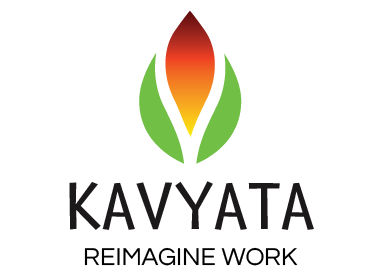
08 Aug Applying Design Thinking To Designing Careers
Everyone designs who devises courses of action aimed at changing existing situations into preferred ones.”
—Herbert Alexander Simon, Nobel Prize laureate (1969)
Design thinking is a human-centred approach to innovation, the key word being human. In today’s VUCA world, with tremendous disruption to the business and technological environment and the resultant impact on work and careers, at Kavyata we believe that the Design Thinking paradigm is what we need when it comes to Careers.
“Design thinking is a human-centered approach to innovation that draws from the designer’s toolkit to integrate the needs of people, the possibilities of technology, and the requirements for business success.”, says Tim Brown, CEO of IDEO, the global design and innovation company which pioneered Design Thinking.
If we rephrase the above, and apply the Design Thinking approach to Careers, this is how it might read:
“Design thinking in careers is a human-centred approach to growth and fulfilment in careers that draws from the toolkit of the self, to integrate one’s needs (emotional, material, professional), the possibilities in the environment and the requirements for self and system success.”
The design thinking cycle involves
-
- observation to discover unmet needs within the context and constraints of a particular situation
- framing the opportunity and scope of innovation
- generating creative ideas,
- testing and refining solutions.
We can apply this framework to the area of career design.
- Step1: All great design thinking begins with ‘Discovery’ or observation of unmet needs. When it comes to careers, especially the transition from early career to mid-career, this discovery involves understanding one’s aspirations, needs, hidden potentials, motivations and values.
For instance, aspirations at mid-career could be to have more autonomy around time, create and build at scale a new business model, work on a problem/area which is of personal meaning/interest. Stepping back to discover these aspirations and unmet needs can be the first step to designing a career/portfolio of work to meet these needs. Though this process may look a bit complex, a structured approach, aided by a coach/career expert, can prove invaluable.
- Step 2: Framing the opportunity and the scope of innovation is the second step in Design Thinking. In the context of careers, this is about expanding the universe of career choices/options.
At this step, it’s ideal to combine imagination and intuition with logic to systematically explore possibilities of what could be and to create desired outcomes. Using only logic, or using the head, may yield career options which are too close to what we may have already pursued in the past. On the other hand, using only intuition and the heart can also carry us away into flights of fantasy.
Blending the heart and head to expansively create possibilities for bringing out the best in oneself, is the design thinking equivalent of generating options in careers. The ‘Head’ refers to one’s known abilities, networks, professional accomplishments, responsibilities and commitments, which in a sense create a set of boundary conditions to work with. These boundaries are extremely useful – otherwise there would be an endless set of possibilities and we would be hamstrung by them. Having said that, the boundary conditions need to be treated as just that – conditions and not absolutes. The ‘Heart’ comes into play in opening ourselves to imaginatively and boldly negotiate these conditions and expand our choices.

Create a new career map with Design Thinking
- Step 3: Experimentation, in the form of generating ideas and testing/refining solutions is a critical component of Design Thinking and so is it with career design. The thought of plunging into unknown realms when it comes to career can be scary. So it is far easier to start one’s experimentation in careers, by thinking about the different domains of expertise and interests we have and where these different domains intersect/overlap.
Starting at the intersection points allows one to experiment quickly, figure out what works/doesn’t work and modify accordingly. One can always step back into one’s circle if the experiments do not work. Chances are though they will work, because being at the intersections, gives one a vantage point and the freedom to spot possibilities which were previously unexplored.
- Step 4: Finally, Design Thinking relies heavily on the power of collective thinking and bringing together networks. This principle when applied to careers, underlines the need to bring in ideas and thinking from diverse networks in generating career ideas/experiments and making a successful transition.
Reaching out to networks of colleagues, mentors, peers, recruiters, school alumni and sounding them out about your career aspirations, as well as career prototypes, can be valuable in getting to know of opportunities which are out of plainsight. Sometimes, these networks can save us precious time and resources, by pointing out flaws and wrong assumptions in our career prototypes – which we ourselves may be blind to notice.

New mindsets for new career choices
The mindsets of Design Thinking can also be applied to designing careers
-
- Curiosity – tapping into interests, looking at what is going on in the external environment
- Solution orientation instead of Problem orientation – reframing the future career steps as ‘finding a number of good career ideas’ instead of ‘finding the one perfect career idea’
- Collaboration – crowd sourcing ideas and information about opportunities related to career aspirations
- Bias towards action – taking small steps towards new career directions, through prototypes/career pivots
Design thinking has been proven to be immensely useful not only in creating products/services but as a tool/practice that informs strategic thinking and change. It’s time we adapt and use this great tool at a personal level to widen our career choices and design our careers to bring us success and fulfilment.

